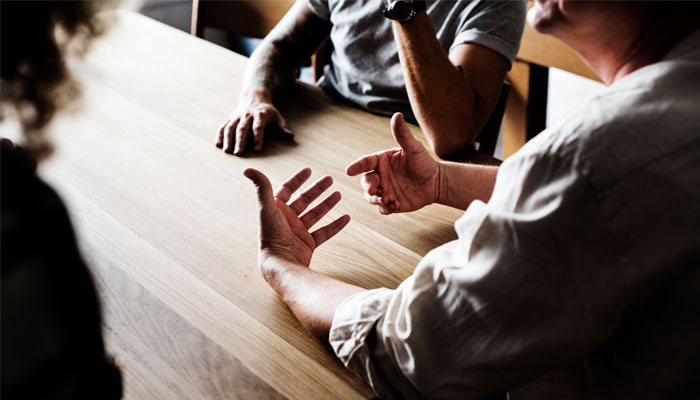Whether you're new to the world of finances and need to learn how to build credit without a credit history, or you have made some mistakes and are dealing with a low credit score, you may find yourself wondering how to increase your credit score. There are six steps you can take to learn how to build your credit and create a healthy financial foundation for yourself. By following these, you can enjoy the benefits of a credit-worthy score both now and in the future.
1. Check Your Credit Report Regularly
It can be frightening to check your credit report when you know you're struggling with poor credit, but you can't fix what you don't know is broken. The first step in learning how to build credit is getting into the habit of checking your report regularly. Take swift action against any problems that you find in the report. If you see mistakes or accounts you don't recognize, take the time to fix them. Making it a regular habit to check your credit report will help you stay on track to take your credit rebuilding seriously. You will be able to see, clearly, what actions are helping and what actions are hurting, but only if you check the report consistently.
2. Open the Right Checking Account and Credit Card
Your checking account although doesn’t directly contribute to helping build credit, it may contribute to creating creditworthiness and forming good banking habits. First, you need to choose the right checking account. Specifically, a second chance checking account can work really well for people who are looking for a second chance at banking and looking to get some creditworthiness established.
A second-chance checking account is not going to have a direct impact on your credit score. However, it gives you the convenience of a checking account in spite of your past banking mistakes. It also allows you to start building a positive banking history again. After using the second chance checking account for a period of time, you will have the option to upgrade to a regular account. If you're finding that getting a checking account is difficult due to your credit history, this is where you need to look.
Next, open a new credit card. This might seem like a bad idea in light of your credit problems, but it can actually give you a tool for rebuilding your credit history as long as you are responsible for your usage. Secured credit cards are designed specifically for people with no credit or poor credit, but may have higher fees or require a deposit to secure the line of credit. At the same time, it is a good option as they do allow you to start using credit again. With a credit card in hand, you can make small purchases, and pay them off each month, to start rebuilding that credit history. These cards also add to your borrowing power, which can impact your credit score as well.
Click here to learn about Finex's Second Chance Checking and credit-building products.
3. Build Credit by Striving Never to Miss a Payment Again
One of the most important things you can do to build your credit is to commit to never missing a payment again. Missed payments have a huge impact on your credit history and score, so make sure you're paying on time, every time.
One of the easiest ways to ensure this is to set up automatic payments with all of your creditors. Automatic payments mean the bill gets paid and you don't have to think about it. This makes it nearly impossible to miss a payment. This will help your credit score because your repayment history is responsible for 35 percent of your score.
4. Start Your Rainy Day Fund to Help Build Credit
A savings account is another tool that doesn't have a direct impact on your credit but can help you in the process of building credit. A rainy day fund is a fund you use for emergencies only. You will set aside a few thousand dollars in this account, and use that when you face a sudden emergency car repair, appliance replacement, or similar cost.
So how does this help you build credit? These types of emergencies are inevitable as you go about your life. Having a rainy day fund means you can cover these emergencies without pulling out the credit cards. Keeping your credit card spending minimal is going to push your credit score higher.
5. Use a Credit Builder or Debt Consolidation Loan to Build Credit
Sometimes the problem isn't past repayment issues, but rather a lack of credit history. In order to borrow money, you have to have some credit history, but if you've never had a credit card or loan, it can be hard to get. Credit builder loans can help in this scenario.
Credit builder loans do not require a good credit history. Upon approval, the lender will hold the amount you borrow in a bank account, and you will start making payments. Those payments will get reported to the credit bureaus. When you have repaid the loan in its entirety, you will get the money. The lender takes on very little risk because they never release the funds to you until the loan is repaid, but you get something positive to add to your credit history. When you're done repaying the loan, you can use the money for your emergency fund or to pay down other bills.
If you already have a debt problem, a debt consolidation loan can help as you learn how to build credit. These allow you to roll your high-interest credit card bills into a lower-interest loan, pay them all off in one lump sum, and manage just one monthly payment. Debt consolidation loans can be tricky if you have poor credit, because they may have high-interest rates, but they can make your overall debt problem easier to manage while you work to rebuild your credit.
6. Pay Down Balances and Use Credit Cards Sparingly
One of the best ways to rebuild your credit is to pay down your card balances. To do this, you need to start paying more than just the minimum. With the minimum payment only, it can take many years to pay off balances and get ahead with your credit.
To pay down your credit card balances, start with the one with the smallest balance. Pay down as much of that as possible each month until it is repaid, and only pay the minimum on your other cards. Once the smallest balance is paid off, take the amount you were paying towards that and add it to the minimum for the card with the next smallest balance. Continue rolling these balances until you have paid off everything.
In order to make this debt repayment plan work, and to continue building your credit, use your credit cards sparingly. Adding to the debt while trying to pay it down is counterproductive. Use them sparingly, pay them down, and watch as your credit score continues to rise.
Learning how to build credit is not difficult, but it does take time and dedication. With the right mindset and tools, you can rebuild your credit, or learn how to build credit from the ground up, and put yourself in a better financial position. Make the decision now to start these six steps, and enjoy the benefit that a healthy credit rating brings.
For more details on how to build credit and how a second chance checking account can help, review our "Roadmap to Building Credit: Second Chance Checking and Specific Steps to Rebuilding Credit".


